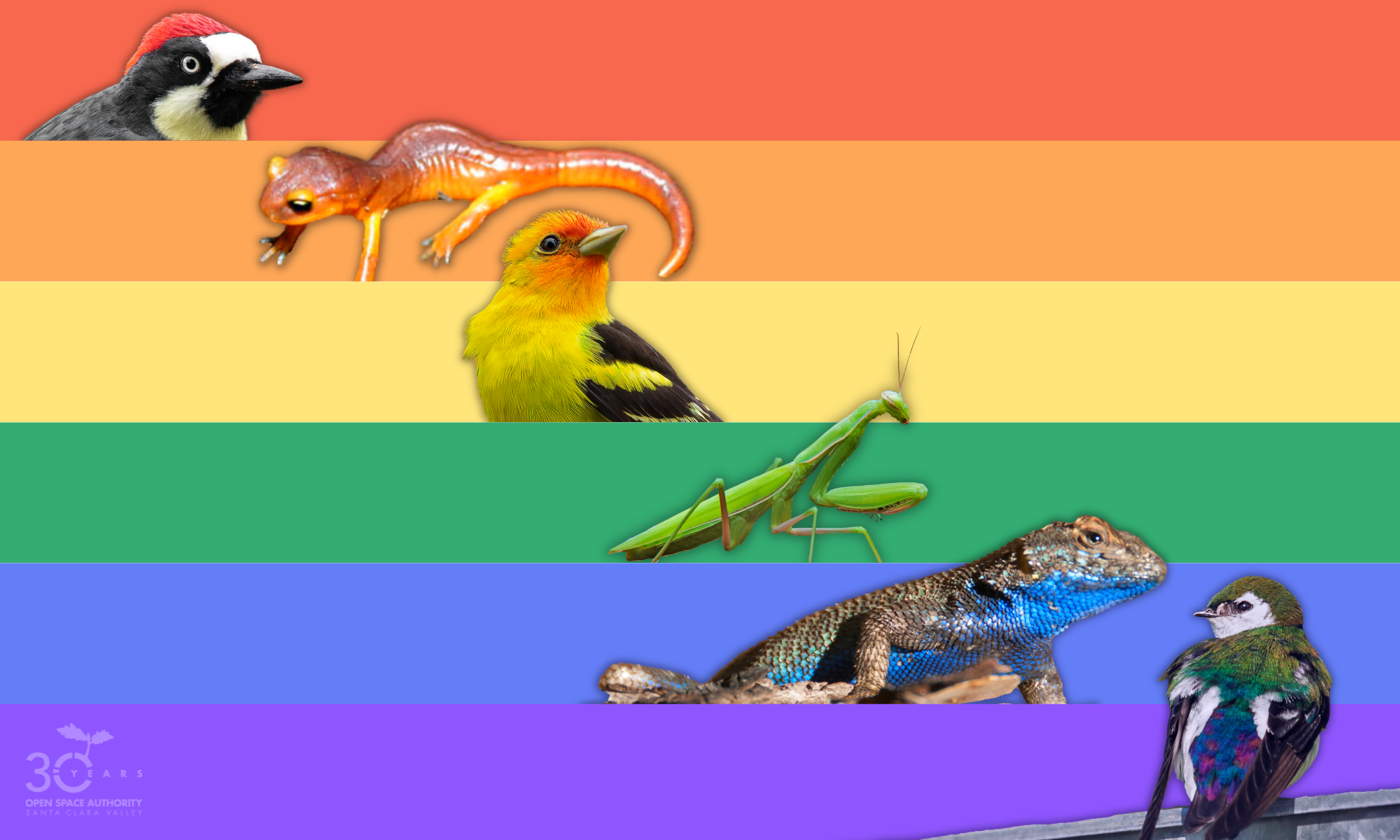One of the beautiful things about nature is the diversity of life represented within it, including every color of the rainbow! Biodiversity in nature is absolutely critical for preserving habitat, maintaining a sustainable food supply, promoting healthy drinking water, mitigating the impacts of climate change, and so much more.
Diversity in nature is just as important as diversity in our human communities. Pride Month, which amplifies and supports LGBTQ+ voices, history, rights, and culture, is one of the largest celebrations of human diversity.
In honor of Pride Month, keep reading to find the local wildlife living in the Santa Clara Valley’s rolling hills, oak woodlands, sprawling grasslands, and critical wetlands representing the colors of the traditional 6-color pride flag.
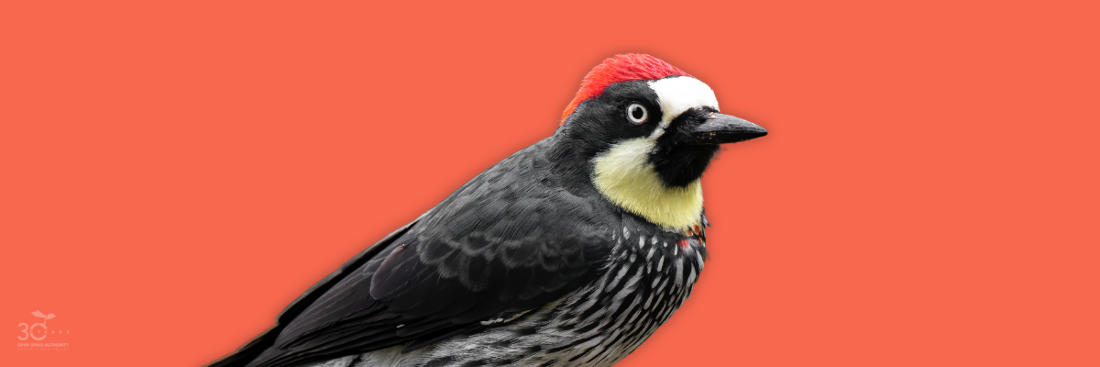
Red: Acorn Woodpecker
The acorn woodpecker is hard to miss! This bird’s bright red head is contrasted by a black back and white speckled chest and is easy to spot in its habitat of oak woodlands. These birds store thousands of acorns a year by jamming them into the holes they peck into trees.
Fun fact: While these birds typically live for one to two years, the oldest acorn woodpecker ever observed lived to be over 17 years old.
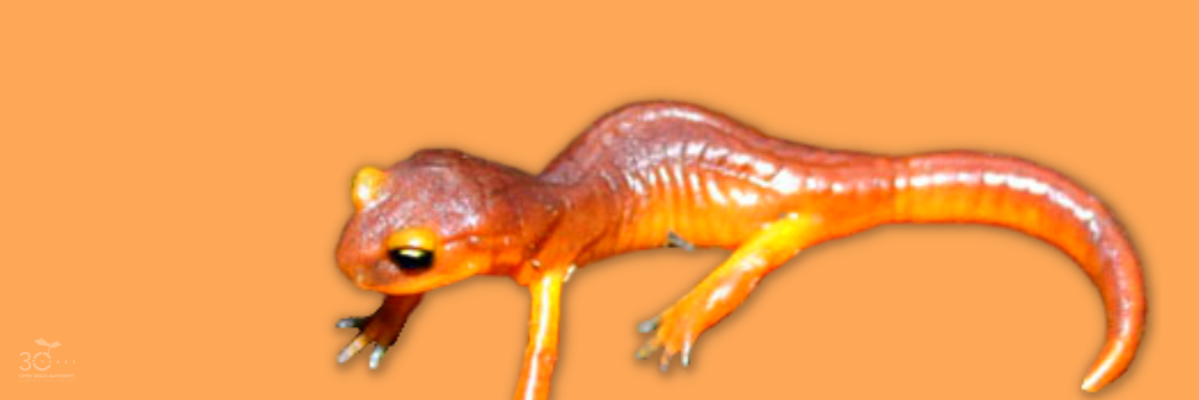
Orange: Yellow-eyed ensatina
The yellow-eyed ensatina is an orange-brown salamander that is about 5 inches long. This critter evolved its yellow eyes and brightly colored orange belly to resemble the more toxic California newt - as a way to discourage predators! You can distinguish them from California newts as the newts have bumpy skin and clearer eye color definition. To learn more about local salamanders, click here.
Fun fact: These salamanders have no lungs — instead they breathe through their skin and mouth.

Yellow: Western tanager
The western tanager is known for its bright yellow body, with black streaked wings and a red face. These birds can be found in wooded areas across the west coast, taking a liking to forests as well as the oak and riparian woodlands that span the Santa Clara Valley.
Fun fact: This bird gets red feathers from a rare pigment called rhodoxanthin that they likely obtain from insects in their diet.
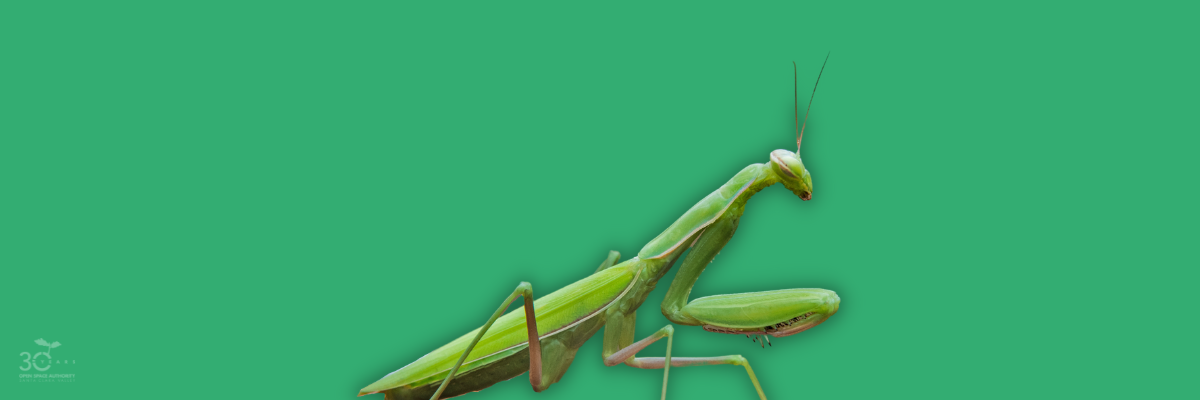
Green: California mantis
Native to the West Coast of the United States, the California mantis can be green, brown, and yellow. They enjoy chaparral and desert environments with vegetation to use to climb, hide, and hunt. These carnivorous critters eat other insects, and even sometimes members of their own species.
Fun fact: Mantids are the only insects that can look over their shoulder, with the ability to turn their head more than 180 degrees.
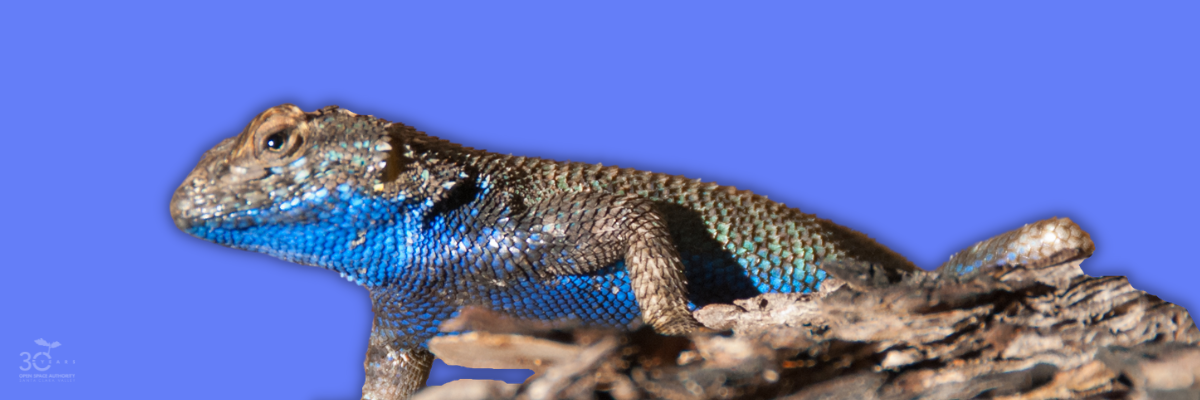
Blue: Western fence lizard
Western fence lizards are about 3 inches long with bits of blue on their bellies. Males are often observed doing a push-up like display to defend their territory and to attract females. Lizards are a staple food of snakes and birds of prey like hawks.
Fun fact: The blood of these lizards contains a protein that kills the bacteria that causes Lyme disease. Ticks that live in regions with this lizard carry the disease 45 percent less frequently!
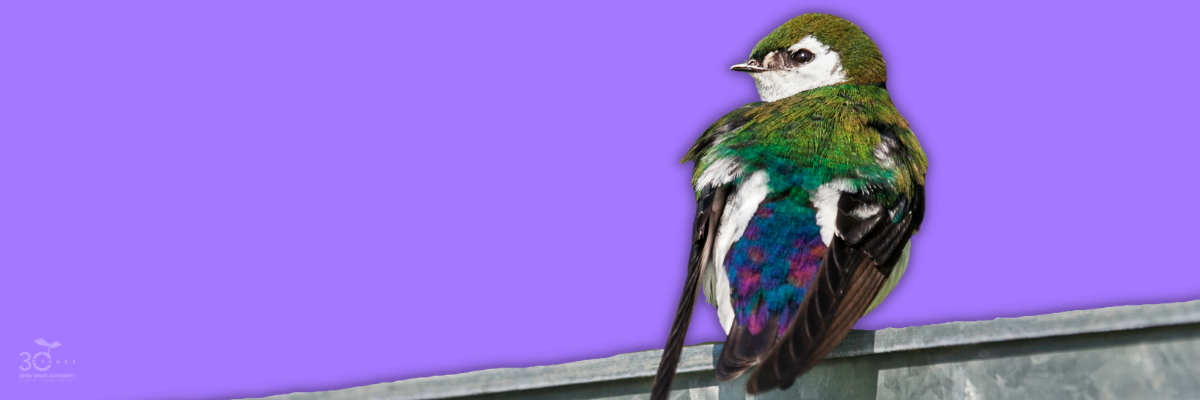
Purple: Violet green swallow
When the light hits these swallows right, observers can see vibrant green and iridescent purple on these birds’ backs, contrasted with bright white chests. These birds prefer to snack on insects, catching flies, aphids, beetles, and more in mid-air. Violet green swallows can be found in their open woodland habitat across the western United States.
Fun fact: These birds are secondary cavity nesters, meaning they typically nest in natural holes or previously occupied nests.
To learn more about keeping wildlife and yourself safe when you hit the outdoors, click here.
